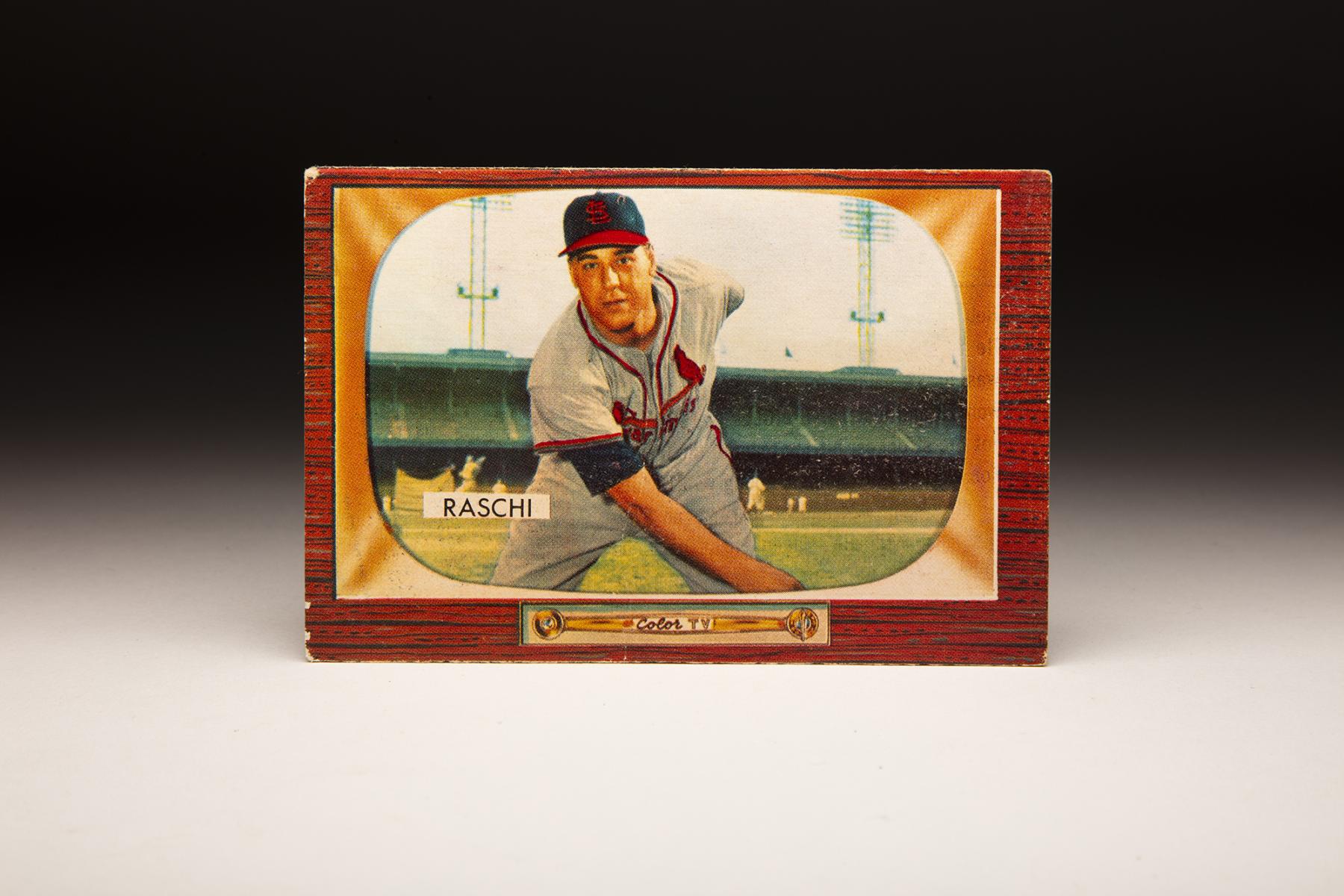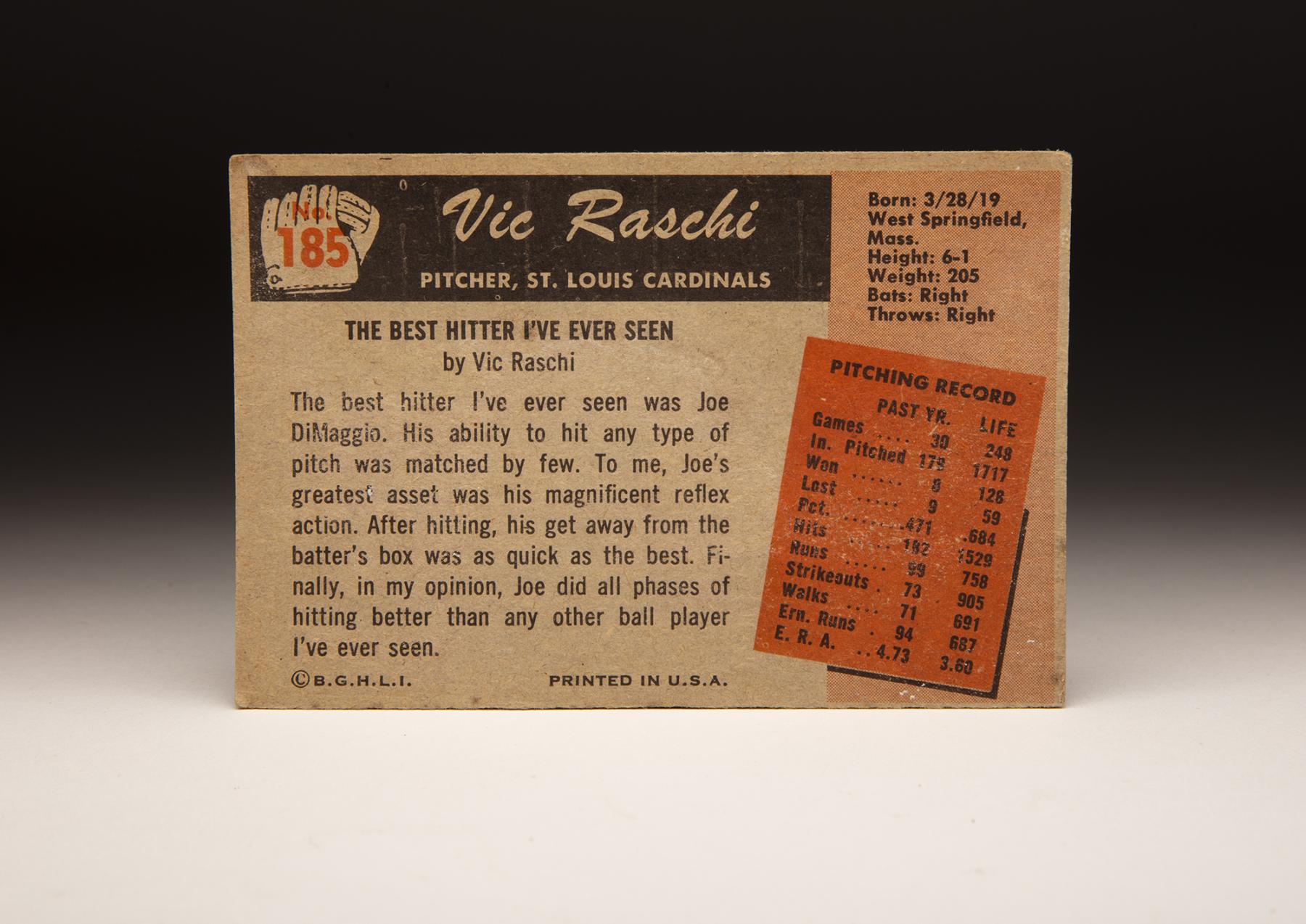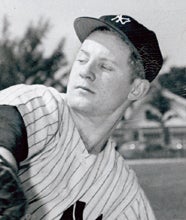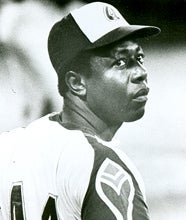- Home
- Our Stories
- #CardCorner: 1955 Bowman Vic Raschi
#CardCorner: 1955 Bowman Vic Raschi
The State University of New York College at Geneseo is located 35 miles south of Rochester, N.Y., just west of Conesus Lake – the western-most of the Finger Lakes. And on the campus of SUNY Geneseo sits a unique softball field, one that looks like many other NCAA Division III diamonds except for one distinguishing feature.
The sign identifies it as the Vic Raschi Softball Field. For many years, however, it hosted baseball games. Fitting, since Raschi – the coach at SUNY Geneseo for many years – was a three-time 20-game winner and four-time All-Star.
Hall of Fame Membership
There is no simpler, and more essential, way to demonstrate your support than to sign on as a Museum Member.
It is an enduring monument to the ace pitcher of the greatest dynasty baseball has ever known.
The New York Yankees’ run of five straight World Series titles from 1949-53 turned millions of kids into fans during the postwar era. While the Bronx Bombers had certainly been dynastic from 1936-39 with four World Series titles in a row, it was manager Casey Stengel’s run that cemented the Yankees as America’s team.
With the new technology of television – illustrated on Raschi’s 1955 Bowman baseball card – spreading pinstripe passion around the nation, the Yankees embarked on a stretch of winning that seemed more like destiny than a dynasty. Not once did those teams win 100-or-more games in a season, and the pitching staff featured one future Hall of Famer – Whitey Ford – in a regular role. And Ford only pitched in about a season-and-a-half of those five championship years.
Instead, it was Raschi who led – or tied for the team lead – in victories in three of those five seasons.
Born March 28, 1919, in West Springfield, Mass., Victor John Angelo Raschi signed a contract with the Yankees while still in high school, with the team agreeing to pay for his education and Raschi agreeing to sign with the Yanks after he graduated. He enrolled at the College of William and Mary, and in 1941 the Yankees started Raschi in the minors in Amsterdam, N.Y., about an hour’s drive from Cooperstown.
After a promotion to Class B Norfolk in 1942, Raschi served three years with the Army Air Corps during World War II. Upon his discharge, Raschi returned to baseball and made his big league debut at the advanced age of 27-and-a-half on Sept. 23, 1946.
But despite his age, the Yankees saw something in Raschi – a determination that made him nearly unflappable on the mound. After starting the 1947 season by going 8-2 for Triple-A Portland, Raschi joined the Yankees in July and went 7-2 down the stretch as New York won the American League pennant. He appeared in two games in relief in the World Series, helping the Yanks beat the Dodgers in a thrilling seven-game matchup.
The next season, Raschi turned his fastball-slider-changeup mix loose on the AL as a member of the Yankees rotation, going 19-8 with a 3.84 ERA and earning his first All-Star Game selection. New York did not repeat as AL champions, but in 1949 Raschi began a string of three straight seasons with 21 victories.
As the Yankees won pennant after pennant 1949-53, Raschi was 5-3 with a 2.14 ERA in the World Series. He won the clinching games in both 1949 and 1951, and started Game 1 of the 1950 Fall Classic against the Phillies.
He also started the All-Star Game for the American League in both 1950 and 1952.
All this earned Raschi a reported $40,000 contract for 1952, making him the highest-paid Yankees pitcher in history. He went 13-6 with a 3.33 ERA in 181 innings in 1953, but the Yankees sold Raschi to the Cardinals for $85,000 when the pitcher held out in the spring of 1954.
Raschi joined the Cardinals rotation and immediately became part of more history when Hank Aaron singled off him for his first career hit on April 15, 1954. Eight days later, Aaron hit his first big league home run off Raschi, who finished the season with a record of 8-9 and a 4.74 ERA.
After battling back trouble in the spring of 1955, Raschi made just one start for St. Louis – allowing four runs and five hits in 1.2 innings in a loss against the Reds on April 18. The next day, the Cardinals released him.
He hooked on with the Kansas City Athletics two weeks later, but struggled to a 4-6 record with a 5.42 ERA over 20 appearances. And with that, the 36-year-old right-hander’s career was over.
In retirement, Raschi and his wife Sally returned to her hometown of Groveland, N.Y., just south of Conesus Lake. He coached both baseball and basketball at SUNY Geneseo (then Geneseo State Teachers College), where he became a beloved local hero.
Raschi passed away on Oct. 14, 1998, in Groveland at the age of 69.
His record of 132-66, including a 3.72 ERA, does not adequately tell the story of a pitcher who was the backbone of the game’s most successful dynasty. His six World Series rings, however, just might.
Craig Muder is the director of communications for the National Baseball Hall of Fame and Museum
Related Stories
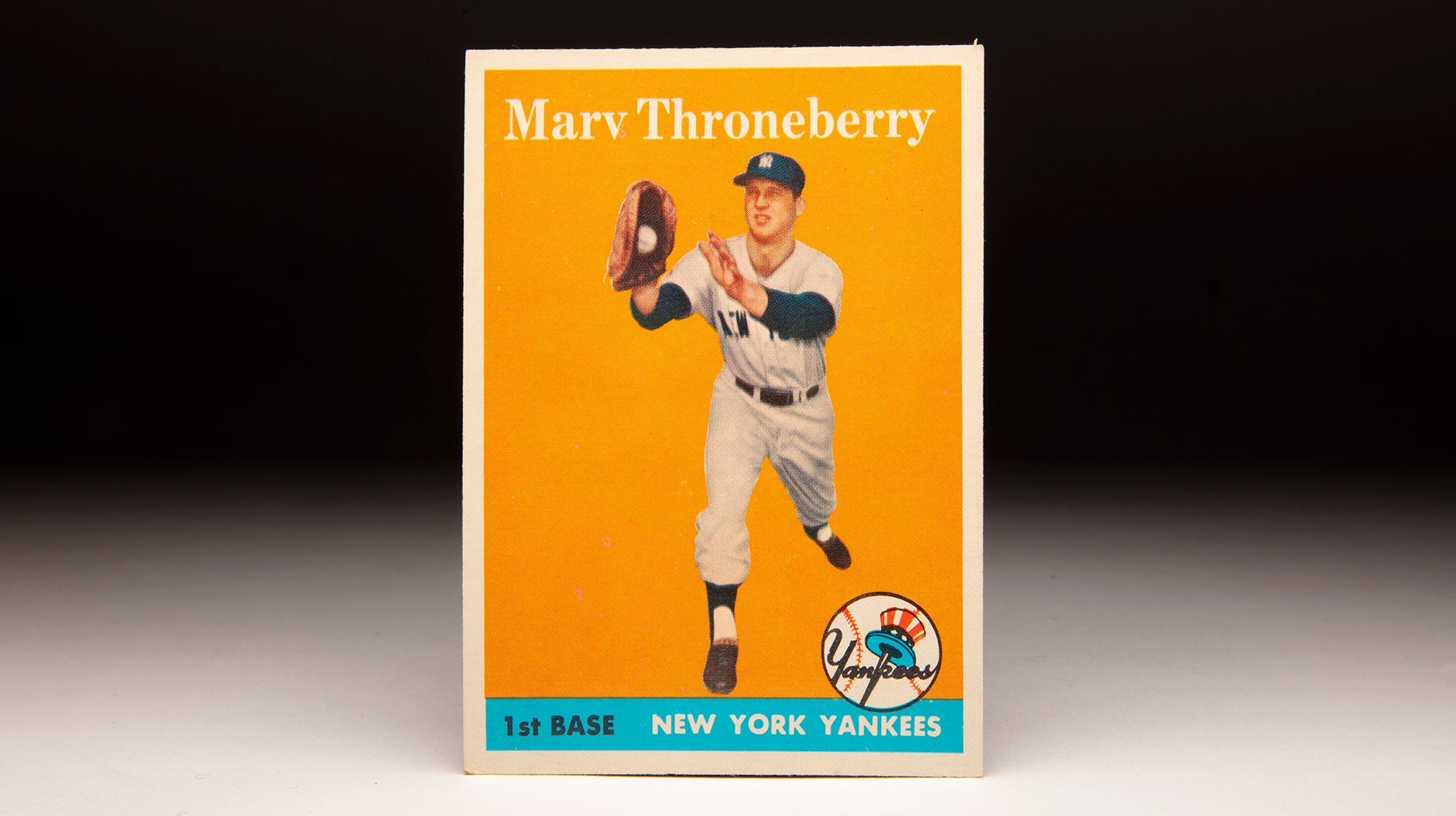
#CardCorner: 1958 Topps Marv Throneberry
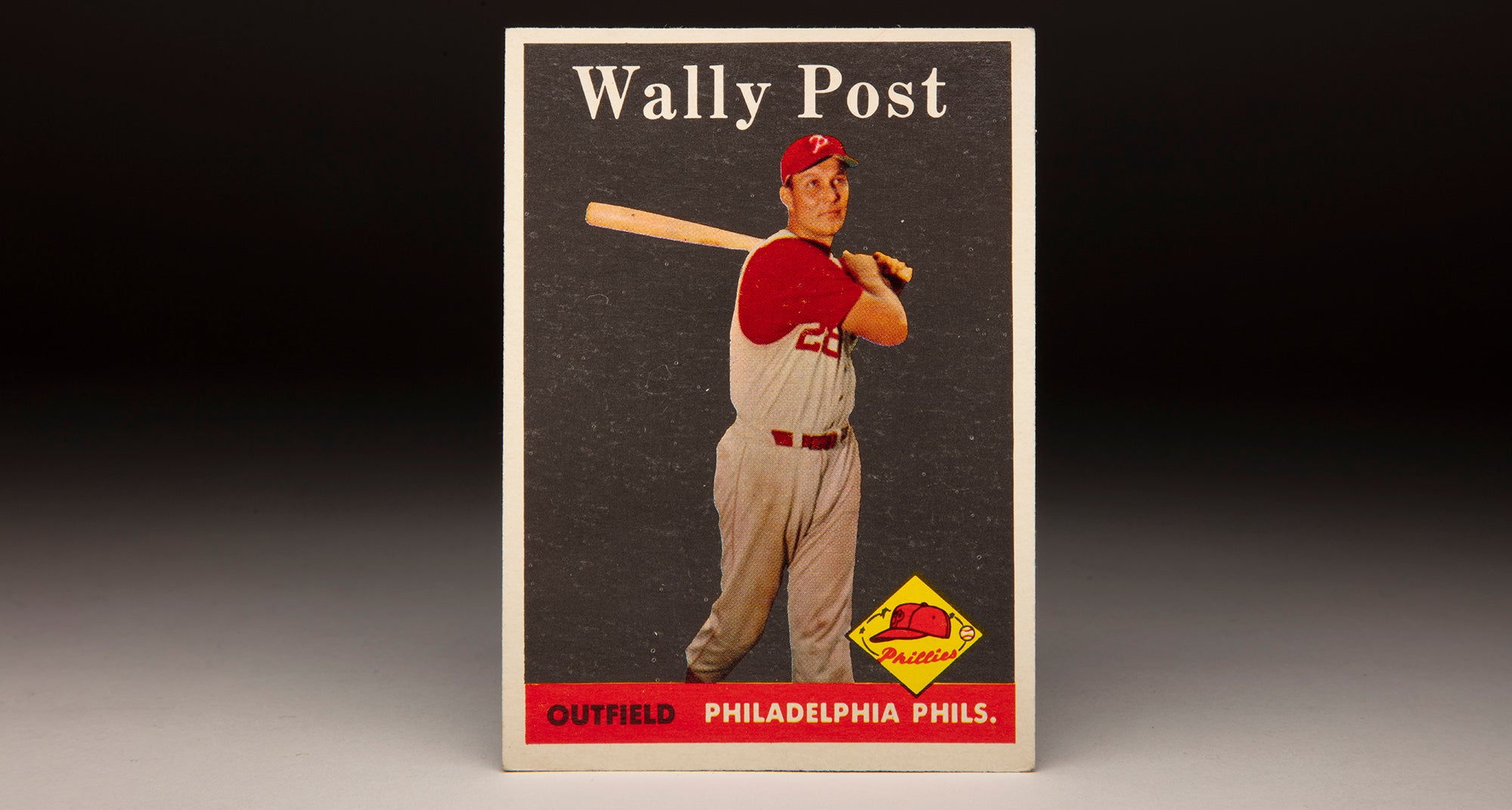
#CardCorner: 1958 Topps Wally Post
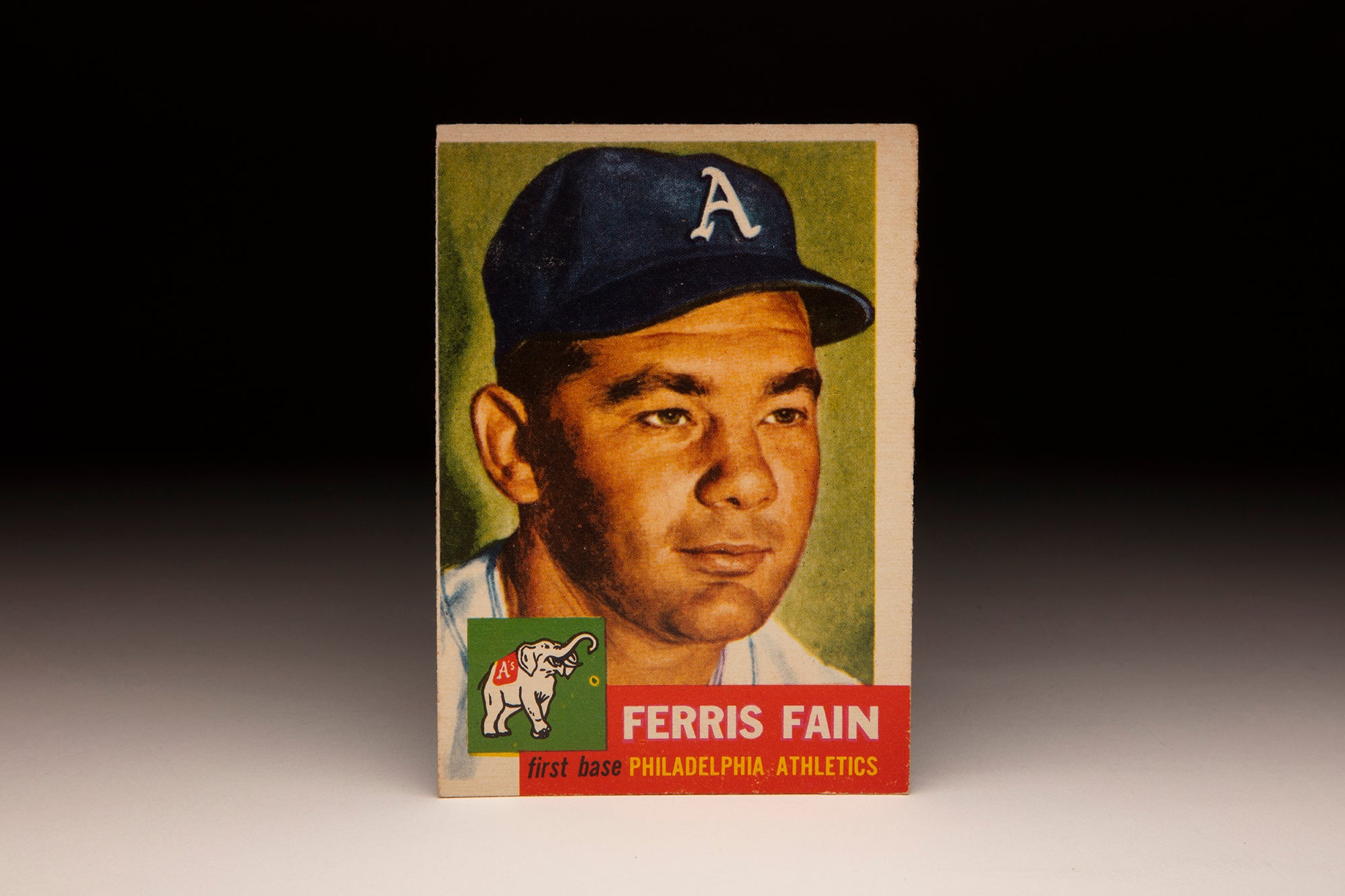
#CardCorner: 1953 Topps Ferris Fain
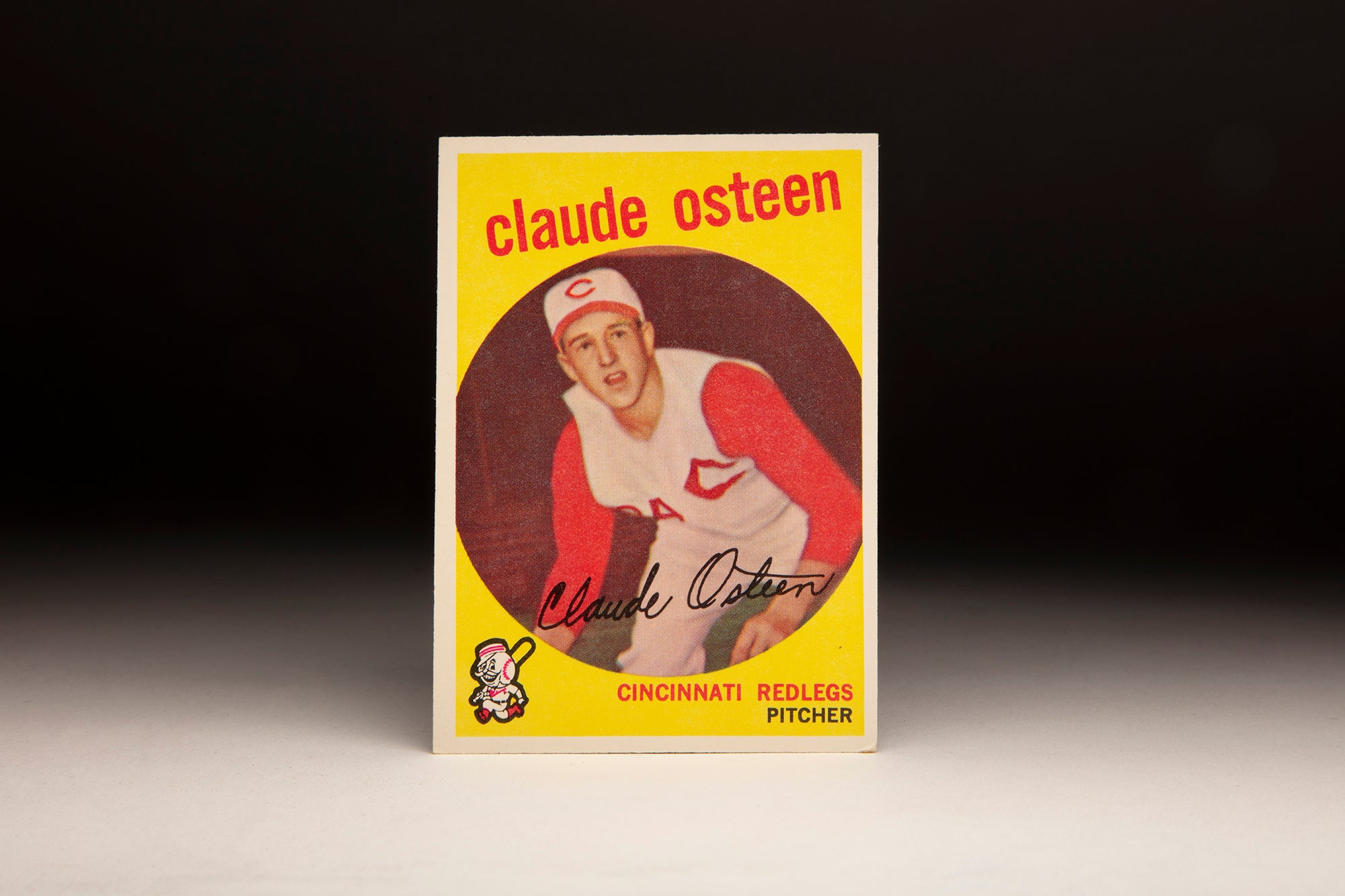
#CardCorner: 1959 Topps Claude Osteen

#CardCorner: 1958 Topps Marv Throneberry

#CardCorner: 1958 Topps Wally Post

#CardCorner: 1953 Topps Ferris Fain


